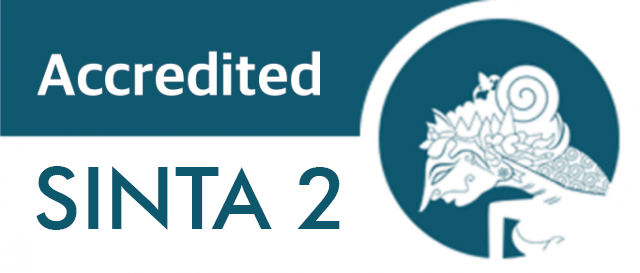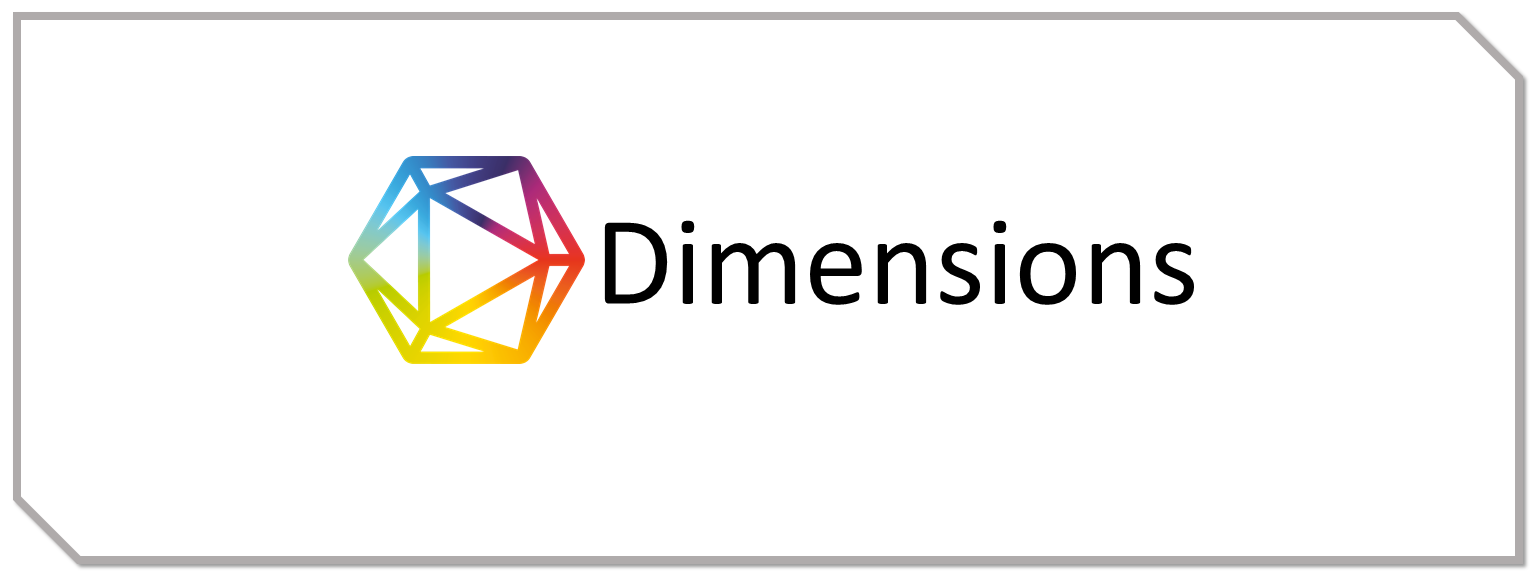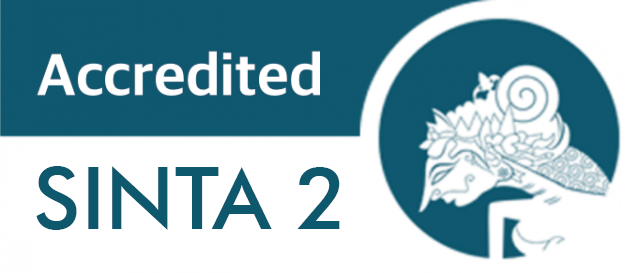The Association Between Loneliness and Depression in Adolescents with Self-harm at a Vocational High School in Kabupaten Malang
Introduction: Adolescents with self-harm behavior are in the spotlight because they are increasing nowadays. Various studies have shown a relationship between self-harm and affective disorders, one of which is depression. Adolescents are also subjects who are prone to feeling lonely. This study was conducted to determine the association between loneliness and depression in adolescents with self-harm behavior at Vocational High School in Kabupaten Malang. Methods: This study used an observational analytic cross-sectional study design with a consecutive sampling technique. The population and sample were students in the 10th and 11th grades (14-18 years old) at a Vocational High School in Kabupaten Malang. Self-harm behaviors are questioned using the Self-Harm Inventory (SHI). Loneliness levels are measured using the UCLA Loneliness Scale Version-3 (UCLA-3). Meanwhile, depression rates are evaluated using the Patient Health Questionnaire -9 (PHQ-9). Statistics will be tested using Chi-square analysis. Results: Approximately 25% of subjects tended to do self-harm, and 101 of them had mild symptoms of depression. The results of the chi-square independence test showed that χ2(4)=253.663 p=0.000. A moderate degree of loneliness was experienced by 32.31% of students or as many as 95 students. The chi-square independence test showed that χ2(3)=216.359 p=0.000. Discussion: Few research, nevertheless, have painted a picture of adolescent loneliness, suggesting that both loneliness and depression may be risk factors for young people to harm themselves. This study showed a strong correlation between loneliness and self-harm. Conclusion: There was a significant correlation between self-harm, depression and loneliness.
Keywords: Loneliness, Self-Harm, Depression, Adolescent, Mental Health
Introductions
Loneliness is an emotional and cognitive condition in which the individual has little social connection and is not satisfied with it because it does not meet his or her expectations[1]. Prior studies have found loneliness to be perceived as isolation that has negative physical and emotional effects. Another piece of research suggests that loneliness may be associated with poor mental health, specifically psychological well-being, including self-esteem[2]. This situation of loneliness can be experienced by anyone regardless of group, age, or gender, as shown by Eriany, 1997. Usually, loneliness is considered a feeling in individuals of late age. The Journal Psychology Today showed that of the 40,000 individuals, who had the intensity of often feeling lonely were individuals in the adolescent age group compared to the age group over 55 years, which is 79%[3]. As is known, adolescence is the age of selection and formation of peer support (peer group) where social interaction with peers is fundamental in both processes. This suggested that adolescents are also susceptible to poor-quality relationships that trigger resolute connections and feelings of loneliness[4].
The loneliness experienced by teenagers when continuously felt can trigger negative feelings such as despair, depression, anxiety, dissatisfaction, pessimism about the future, feelings of self-guilt, and shame[4][5]. The 2018 Basic Health Research (Riskesdas) report indicated that people of various ages could suffer from depressive illnesses. The frequency of depressive disorders in adolescents reaches 62%, and over 12 million persons over the age of 15 suffer from depression[6]. In a study by Nenov-Matt in 2020, patients with Persistent Depressive Disorder (PDD) had high levels of loneliness[7]. The University of Illinois in 1997 also showed that the feelings of loneliness experienced by adolescents can lead to negative reactions to reduce the feeling of solitude. Some examples of negative responses, such as drinking alcoholic beverages, bidding, using drugs, smoking, and doing self-harm can end in a suicide attempt. Simultant data mentioned in DSM-5 shows depressive disorder is common in youth from the age of 9 and substance use disorders become more prevalent during middle school[8]. In another study, patients who reported thoughts of death or self-harm nearly every day on the PHQ-9 screener were 10 times more likely to attempt suicide in the following year[9].
Minimum data and images of loneliness in Indonesian teenagers are a challenge in attempting to approach teenagers. Data from a high school in West Java, Takwati (2017) found that 8.3% of her students were indicated to have self-harm[10]. Purwandra (2017) also found that three out of five teenagers who broke up have ever committed self-harm[11]. Given the facts and phenomena of self-harm, it is necessary to find out the relationship between loneliness and depression in adolescents and its relationship with self-harm in the educational institution environment.
Methods
This study was a cross-sectional study with a descriptive-analytical approach in June 2023. The study was conducted at a Vocational High School in Kabupaten Malang, East Java, Indonesia. The target population was Vocational High School students of classes X and XI who meet the criteria of youth age of 15-18 years. The size of the sample was determined using purposive sampling. The sampling technique used for this study was a preliminary study that would describe self-harm behavior, loneliness, and depression in students in a targeted school. The inclusion criteria in this study were adolescents with a minimum age of 13 years and a maximum of 18 years and students of classes X and XI at a Vocational High School in Kabupaten Malang. The exclusion criteria were students who refused to be a sample/respondent in this study.
The size of the sample targeted was 1.260 students consisting of students of classes X and XI. Before the research was carried out, the researchers explained the research plan to Guidance and Counseling teachers and students as the subjects, followed by a letter of consent containing their parents’ signature/ consent. Students were allowed to obtain parental consent when they were willing to be sampled in this study. From the 1.260 samples targeted, 1.178 said they agreed to participate as samples. In this study, seven students were excluded from the data because they did not meet the inclusion criteria of the sample’s age.
The research used a questionnaire tool presented through Google Forms. The questionnaire included several questions following the data the researchers wanted: 1) Demographic data that included the name, age, class, and majority; 2) The self-harm inventory (SHI) that has been validated. The SHI includes 22 questions that represent self-harm behavior[12]; 3) The Patient Health Questionnaire (PHQ-9) has been validated in Indonesian to determine depression scores, presenting 9 questions; 4) UCLA-3 revised which has been translated into Indonesian and validated as a loneliness measurement instrument consisting of 20 questions.
The Google form links were shared with respondents through Guidance and Counseling Teachers. The data was processed using Microsoft Excel and performed statistical testing using the Chi-Square Test with p<0,05. This study was held in June-July 2023. Ethical clearance for the study was obtained from the Research Ethics Committee of Menur Mental Hospital, East Java (ref no: 070/3832/102.8/2023).
Results
The study used 1.171 subjects consisting of adolescents aged 14-18 years. Based on the characteristics of the subjects, as many as 1.008 respondents were women, while 163 others were male respondents. The average
S. Tiwari, “Loneliness: A disease?,” Indian J. Psychiatry, vol. 55, no. 4, p. 320, 2013, doi: 10.4103/0019-5545.120536.
H. Kadotani, I. Okajima, K. Yang, and M. H. Lim, “Editorial: The impact of social isolation and loneliness on mental health and wellbeing,” Front. Public Heal., vol. 10, Dec. 2022, doi: 10.3389/fpubh.2022.1106216.
I. R. Lubis and L. Yudhaningrum, “Gambaran Kesepian pada Remaja Pelaku Self Harm,” JPPP - J. Penelit. dan Pengukuran Psikol., vol. 9, no. 1, pp. 14–21, Apr. 2020, doi: 10.21009/JPPP.091.03.
S.-J. Blakemore, “Development of the social brain in adolescence,” J. R. Soc. Med., vol. 105, no. 3, pp. 111–116, Mar. 2012, doi: 10.1258/jrsm.2011.110221.
R. J. Bonnie and E. P. Backes, Eds., The Promise of Adolescence. Washington, D.C.: National Academies Press, 2019. doi: 10.17226/25388.
S. R. Bangun, “The Effectiveness of Group Psychotherapy on Reducing Anxiety and Depression Symptoms in Adolescents,” J. Psikiatri Surabaya, vol. 11, no. 2, pp. 119–127, Nov. 2022, doi: 10.20473/jps.v11i2.35989.
T. Nenov-Matt et al., “Loneliness, Social Isolation and Their Difference: A Cross-Diagnostic Study in Persistent Depressive Disorder and Borderline Personality Disorder,” Front. Psychiatry, vol. 11, Dec. 2020, doi: 10.3389/fpsyt.2020.608476.
S. Goldstein and M. DeVries, Eds., Handbook of DSM-5 Disorders in Children and Adolescents. Cham: Springer International Publishing, 2017. doi: 10.1007/978-3-319-57196-6.
Pagalilauan G, Psychiatric Diagnosis And Management In Primary Care, An Issue Of Medical Clinics. Great Britain: Elsevier Health Scinces, 2014.
Liba S Takwati, “Proses Regulasi Emosi Remaja Pelaku Self Injury The Emotion Regulation Process Of Adolescence With Self Injury Behaviour,” J. Ris. Mhs. Dan Kosneling, vol. 5, no. 2, 2017.
N. F. Ade Purwandra A, Wahyu Pertiwi Y, “Self Esteem Dengan Kecenderungan Self Injury Pada Mahasiswa Yang Mengalami Putus Cinta,” Universitas Bhayangkara Jakarta Raya. [Online]. Available: http://repository.ubharajaya.ac.id/id/eprint/28100%0A
A. F. Kusumadewi, B. H. Yoga, S. Sumarni, and S. H. Ismanto, “Self-Harm Inventory (SHI) Versi Indonesia Sebagai Instrumen Deteksi Dini Perilaku Self-Harm,” J. Psikiatri Surabaya, vol. 8, no. 1, p. 20, Jan. 2020, doi: 10.20473/jps.v8i1.15009.
T. Buelens, K. Luyckx, G. Kiekens, A. Gandhi, J. J. Muehlenkamp, and L. Claes, “Investigating the DSM-5 criteria for non-suicidal self-injury disorder in a community sample of adolescents,” J. Affect. Disord., vol. 260, pp. 314–322, Jan. 2020, doi: 10.1016/j.jad.2019.09.009.
J. Tang et al., “Prevalence of and risk factors for non-suicidal self-injury in rural China: Results from a nationwide survey in China,” J. Affect. Disord., vol. 226, pp. 188–195, Jan. 2018, doi: 10.1016/j.jad.2017.09.051.
M. Zetterqvist, L.-G. Lundh, Ö. Dahlström, and C. G. Svedin, “Prevalence and Function of Non-Suicidal Self-Injury (NSSI) in a Community Sample of Adolescents, Using Suggested DSM-5 Criteria for a Potential NSSI Disorder,” J. Abnorm. Child Psychol., vol. 41, no. 5, pp. 759–773, Jul. 2013, doi: 10.1007/s10802-013-9712-5.
J. M. Twenge, “Increases in Depression, Self‐Harm, and Suicide Among U.S. Adolescents After 2012 and Links to Technology Use: Possible Mechanisms,” Psychiatr. Res. Clin. Pract., vol. 2, no. 1, pp. 19–25, Jun. 2020, doi: 10.1176/appi.prcp.20190015.
B. Burstein, H. Agostino, and B. Greenfield, “Suicidal Attempts and Ideation Among Children and Adolescents in US Emergency Departments, 2007-2015,” JAMA Pediatr., vol. 173, no. 6, p. 598, Jun. 2019, doi: 10.1001/jamapediatrics.2019.0464.
K. Kroenke, R. L. Spitzer, and J. B. W. Williams, “The PHQ-9,” J. Gen. Intern. Med., vol. 16, no. 9, pp. 606–613, Sep. 2001, doi: 10.1046/j.1525-1497.2001.016009606.x.
E. Skaug, N. O. Czajkowski, T. Waaktaar, and S. Torgersen, “The role of sense of coherence and loneliness in borderline personality disorder traits: a longitudinal twin study,” Borderline Personal. Disord. Emot. Dysregulation, vol. 9, no. 1, p. 19, Dec. 2022, doi: 10.1186/s40479-022-00190-0.
C. E. Miller, M. L. Townsend, and B. F. S. Grenyer, “Understanding chronic feelings of emptiness in borderline personality disorder: a qualitative study,” Borderline Personal. Disord. Emot. Dysregulation, vol. 8, no. 1, p. 24, Dec. 2021, doi: 10.1186/s40479-021-00164-8.
M. A. Reinhard, T. Nenov-Matt, and F. Padberg, “Loneliness in Personality Disorders,” Curr. Psychiatry Rep., vol. 24, no. 11, pp. 603–612, Nov. 2022, doi: 10.1007/s11920-022-01368-7.
R. P. Auerbach, D. Pagliaccio, G. O. Allison, K. L. Alqueza, and M. F. Alonso, “Neural Correlates Associated With Suicide and Nonsuicidal Self-injury in Youth,” Biol. Psychiatry, vol. 89, no. 2, pp. 119–133, Jan. 2021, doi: 10.1016/j.biopsych.2020.06.002.
R. P. de O. Costa et al., “Profile of non-suicidal self-injury in adolescents: interface with impulsiveness and loneliness,” J. Pediatr. (Rio. J)., vol. 97, no. 2, pp. 184–190, Mar. 2021, doi: 10.1016/j.jped.2020.01.006.
Febry Nurdiani, “Uji Validitas Konstruk Alat Ukur Ucla Loneliness Scale Version 3,” Uin Syarif Hidayatullah Jakarta.
G. Geulayov, K. Mansfield, C. Jindra, K. Hawton, and M. Fazel, “Loneliness and self-harm in adolescents during the first national COVID-19 lockdown: results from a survey of 10,000 secondary school pupils in England,” Curr. Psychol., vol. 43, no. 15, pp. 14063–14074, Apr. 2024, doi: 10.1007/s12144-022-03651-5.
T. Tarigan and N. C. Apsari, “Perilaku Self-Harm atau Melukai Diri Sendiri yang Dilakukan oleh Remaja (Self-Harm Or Self-Injuring Behavior By Adolescents),” Focus J. Pekerj. Sos., vol. 4, no. 2, p. 213, Feb. 2022, doi: 10.24198/focus.v4i2.31405.
Copyright (c) 2024 Puspa Maharani, Izzatul Fithriyah, Ivana Sajogo

This work is licensed under a Creative Commons Attribution-ShareAlike 4.0 International License.
1. Copyright of this journal is possession of the Author, by the knowledge of the Editorial Board and Journal Manager, while the moral right of the publication belongs to the author.
2. The journal allows the author(s) to retain publishing rights without restrictions.
3. The articles are published under a Creative Commons Attribution Share-Alike (CC BY-SA) license. Many research funding bodies prefer the CC BY-SA license because it allows for maximum dissemination and re-use of open access materials. Users are free to share (copy, distribute, and transmit) and remix (adapt) the contribution under this license, including for commercial purposes, as long as they attribute the contribution in the manner specified by the author or licensor.




























